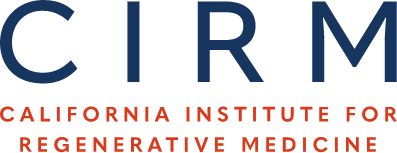Frequently Asked Questions (FAQs)

Welcome to the frequently asked questions (FAQs) page of the California Institute for Regenerative Medicine (CIRM). Here, you’ll find answers to the most common questions you may have on CIRM.
Overview
CIRM, was created by the voters of California in 2004 when they overwhelmingly passed Proposition 71, which authorized $3 billion in funding for stem cell research in California. The agency funds stem cell research at institutions and companies throughout California (as well as institutions and companies outside of the state that conduct a portion of their research in California) with the goal of accelerating treatments to patients with unmet medical needs.
In 2020, California voters approved to continue funding California’s Stem Cell Agency through the passage of Proposition 14: The California Stem Cell Research, Treatments, and Cures Initiative of 2020.
Patient Access
The Alpha Clinics Network conducts high quality stem cell and gene therapy trials for a wide variety of diseases at leading medical centers in California.
The key to the Network’s success is the ability to accelerate the delivery of treatments to patients through partnerships with patients, medical providers and clinical trial sponsors. These partnerships enable:
- Patient-centered clinical trials with the highest standards of care and research
- Strategic collaboration with academic and industry teams developing innovative stem and gene cell therapies
- Leveraging of resources to promote efficiency, acceleration and increased chances of success
The Network supports both CIRM-funded and non CIRM-funded clinical trials by academic and industry sponsors.
The Patient Support Program (PSP) was established to enhance patient access to CIRM-funded clinical trials, an important component of CIRM’s mission and Infrastructure Program.
Through the PSP, CIRM and EVERSANA—a leading provider of global commercial services to the life sciences industry— will address informational, financial and logistical bottlenecks experienced by clinical trial patients and their family members. The PSP will be particularly important for providing equal access to California clinical trial participants.
Services offered by the PSP will include maintaining a Patient Support Center to refer patients to clinical trials, verifying participation and financial support eligibility, as well as administering Patient Assistance Fund (PAF) reimbursements to cover travel expenses, meals, accommodations, childcare, and other out of pocket expenses. Currently, CIRM has been appropriated $15.6 million from the Patient Assistance Fund to support patients.
The Community Care Centers of Excellence (CCCE) is a new model for increasing clinical trial access to diverse communities throughout California.
The California Stem Cell Research, Treatments, and Cures Initiative of 2020 (Proposition 14) mandates the establishment of the CCCE Program to promote access across the state to clinical trials, treatments, and therapies arising from CIRM-funded research. The CCCEs are designed to serve as a hub for expanding access to clinical trials, regenerative medicine treatments, and CIRM education and training programs. The program will seek to enlist community-based partnerships to engage populations that can benefit from these treatments.
A strategic aim is to provide equitable access to communities and populations that would otherwise have more limited opportunities in the absence of these centers.
Funding
The vast majority of our funds go to advance research and the development of new treatments. In support of this goal, we have helped fund the building of much-needed scientific facilities, created innovative initiatives such as the Alpha Clinics Network, and developed educational programs that train future stem cell scientists.
When we were created in 2004, there were few facilities in California where scientists could work with all types of stem cells, particularly embryonic stem cells, and few scientists had access to labs that contained all the equipment needed to do this specialized work. One of our earliest rounds of funding went to build lab spaces that could be shared by researchers within the institution and also used to train younger scientists on how to work with stem cells.
Training was (and is) needed to build the field and create the next generation of stem cell scientists. New therapies won’t happen without people trained to work with stem cells who have both the technical skills and the equipment they need. We have funded programs to train high school students, college students, graduate students and early career scientists. For more about the different educational programs we’ve funded, visit our Education Programs page.
Most of our funding goes to the research itself. In the early years, because this was such a new field, much of the funding was focused on fundamental, basic science, to help develop a deeper understanding of stem cells and how they worked. More recently we have begun to move the most promising ideas that came out of that earlier funding into clinical trials where they can be tested in people. We’ve also established the Alpha Clinics Network, the Patient Support Program, and the Community Care Centers for Excellence.
Yes. To date we have funded numerous projects including work in heart disease, cancer, HIV/AIDS, two different forms of blindness and sickle cell disease, to name a few. To learn about the latest list of clinical trials that CIRM is funding, visit our Funding Clinical Trials page
When CIRM started in 2004, little research space existed where scientists could work with all types of stem cells, particularly embryonic stem cells, and that contained the equipment needed to work with the cells and – most importantly – develop new therapies. Stem cell scientists were also spread thinly across many research campuses, limiting interactions and slowing the spread of ideas. One of the greatest needs therefore was laboratory space for these scientists to work and collaborate.
The agency provided $271 million toward 12 buildings throughout the state, requiring the institutions to contribute the remaining $543 million to construct and furnish the buildings. That money largely came from donations from individuals or foundations that were inspired by CIRM’s initial commitment to contribute toward the project. This public/private partnership created much-needed work for the construction industry and new, full-time jobs for researchers and other staff.
Funding is open, as it always has been, to both companies and academic institutions.
Applicants do not have to be in California to apply, however, they will have to have some California connection to be eligible for funding. To qualify as a California organization, they must have more than 50% of their employees located in the state, and they must conduct the activities covered by the award in California (with some limited exceptions).
No. Reproductive cloning is specifically prohibited under Proposition 71 and under California law.
Economic Impact
CIRM’s grants create jobs in California and have expanded the biotechnology industry – propelling California as a world leader in stem cell research. Our grants for new buildings also created construction jobs at a time when the state desperately needed them.
A 2019 independent Economic Impact Report conducted by the Schaeffer Center for Health Policy and Economics at USC says that CIRM has had a major impact on California’s economy, creating tens of thousands of new jobs, generating hundreds of millions of dollars in new taxes, and producing billions of dollars in additional revenue for the state. The report looked at the impacts of CIRM funding on both the state and national economy from the start of the Stem Cell Agency in 2004 to the end of 2018.
The estimated impacts from the report are:
- $10.7 billion of additional gross output (sales revenue)
- $641.3 million of additional state/local tax revenues
- $726.6 million of additional federal tax revenues
- 56,549 additional full-time equivalent (FTE) jobs, half of which offer salaries considerably higher than the state average
You can read the press release announcing the 2019 Economic Impact Report here and additional reports from previous years on our Publications page.
As our funding begins to lead to the development of new therapies, a portion of the profits from the sale of those therapies will also be returned to the state. And of course because these therapies are treating diseases that currently have no effective remedy we will also be reducing the health care burden on California, reducing medical spending and improving the quality of life for people in the state.
Resources
We have several ways of keeping people up to date on our research progress.
- Sign up for our email lists. We have four different lists that provide people with information about CIRM news, new funding opportunities, and opportunities to attend public meetings.
- Read our blog, The Stem Cellar. We report on progress by CIRM grantees and update readers on the field of stem cell research.
- Follow us on social media. We have active Facebook, Instagram, Twitter/X, and YouTube channels.
Under Proposition 71, CIRM can accept donations of “additional revenue and real and personal property (including cash), including, but not limited to gifts, royalties, interest, and appropriations that may be used to supplement annual research grant funding and the operations of the institute.” To implement this section, our governing board has adopted a policy and procedure on the acceptance of donated real and personal property.
Find Out More:
CIRM Gift Policy [pdf]



